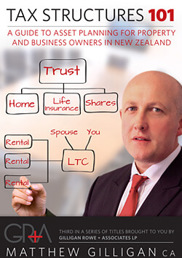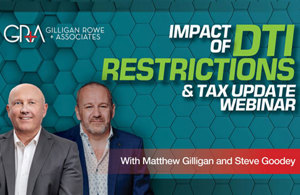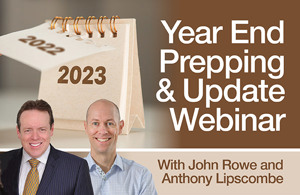
First of all with the OCR announcement this week, what about interest rates? What will the banks do and what should you be thinking about at present?
You will remember in my newsletter on interest rates just over a month ago, I suggested that you consider the cost benefit of breaking your fixed interest contracts and locking up on the 5-year rates, which at the time were a tad inside 6.5% for 5 years (on average).
I suggested to you that the money market for long-term borrowing was showing a steep rise in cost for the banks, indicating the 5-year rates would rise, while the short-term rates were staying low.
And they have. The long-term rates went up 1% on average the week after I emailed you. Thankfully a heap of you fixed long at 6.5% and some have emailed me telling me some of their savings they get from doing it. I was thrilled to hear one person saved $86,000 over 5 years.
The April 30 OCR Announcement 2009
Dr Bollard has reduced the OCR to 2.5%, surprising the market and dropping the interest rates by a full 0.5%.
- This was clearly ahead of expectation, because the the exchange rate fell 1.5c on the Aussie Kiwi cross rate, to around A$.7750 from early $A.792
- He has very clearly indicated the rate will stay down, until late 2010 (to encourage recovery) and suggested the immediate need to fix long and pay a premium over floating rates is unnecessary.
- He has indicated may drop the rate further.
I must say I was expecting Dr Bollard to drop the OCR by 25 basis points (0.25%) this week and go another 25 basis points on the next announcement. That's what he said he would do last month, when he was suggesting NZ must maintain a premium on its rates above Australia to attract capital to NZ. But what turned him is the march en masse by borrowers to fix long over the last month - with Kiwis taking the cheap 5-year rates at 6.5%.
The Money Markets
Two things are happening to the cost of funds for the banks. Firstly the local cost of money, reflected in the OCR is falling.
Secondly (and less focused on by the media), the offshore LIBOR rates measuring interbank lending costs are falling, indicating banks are trusting each other more and placing less of a risk premium on the rates they charge to lend to each other.
This means NZ banks are paying less for the money they borrow offshore and less for the money they borrow locally - all good news for borrowers as rates must drop in this environment.
So great news for property investors, businesses and households who are borrowers, terrible news for deposit holders who rely on their fixed interest savings for their income.
Rates – Short vs Long-term
As you will be aware, the money borrowed from the overnight and short-term money markets is cheaper than the long-term bonds being issued by the banks, who are all chasing the 5-year investors for their cash deposits.
The deposit holders know that rates are likely to rise over the medium to long term (the 10-year average interest rate in NZ is closer to 8%) and investors are reluctant to lend to banks at the current 'super' low rates, when they can lend to corporates like Fonterra at closer to 8%, and wait for the banks to pay more.
So one trend that is emerging is the corporates are cutting out the banks and going direct to the public (raising capital), competing for the long-term investors money.
Another trend is the avalanche of investors locking up long over the last month, causing pressure on the cost of these funds over 5 years, and rates are popping up as a result.
So where are rates going in at present?
Short-term Rates (Floating, 1-2 year rates)
The short-term money supply is forecast to remain cheap for 2009 and into 2010, all things being equal. We should see much of the above-mentioned drop in the OCR passed through by the banks, and I would expect the floating and 1-2 year rates to fall over the next 90 days in line with OCR and LIBOR dropping.
Long-term Rates
The long-term rates are still showing a premium supporting a rate in the early 7% range, with a recent easing in long-term swap rates (falling nearly 15 basis points in the last 10 days). This indicates 5-year rates could fall off the 7.5% high at present, and in my view we could see a quarter to a half of a percent fall in 5-year rates in the next 2 months or so to the early 7s. Thus there is no hurry to fix long term this month, as the 5-year rates are not likely to rise, and more likely to fall slightly.
So this month's advice from me is WAIT and do not lock up long, because we are in a different place to where we were a month ago where the 5-year rates were obviously cheap and likely to rise.
Breaking Fixed Interest Contracts
Many investors are still asking should they break their fixed interest contracts and re-fix or float. This is a tricky question; you need to look at the cost benefit between the cost of breaking and the benefit derived from the cheaper rate over the period you re-fix or float for.
To help our clients, I have created a Fixed Interest Break Cost Analysis tool, a 'rough and ready' spreadsheet that helps you make a decision and estimate cost benefit.
Go ahead and visit the free resources section of our website to download the interest break cost analysis and other useful tools from our wonderful new website, designed for business owners and investors.
And if you would like a hand working out what to do, we have a debt consultant that you can get to for free by Requesting an interview. Just explain that you wish to talk to one of our debt consultants.
Have you seen the other articles on my blog? Check them out. There's sure to be something you'll like from market commentary to tax updates.
Have a good month!

Matthew Gilligan
Managing Director and Property Services Partner
Did you like this article? Subscribe to our newsletter to receive tips, updates and useful information to help you protect your assets and grow your net worth. We're expert accountants providing expert advice to clients in NZ and around the world.
Disclaimer: This article is intended to provide only a summary of the issues associated with the topics covered. It does not purport to be comprehensive nor to provide specific advice. No person should act in reliance on any statement contained within this article without first obtaining specific professional advice. If you require any further information or advice on any matter covered within this article, please contact the author.
Comments
Testimonials
Always available to give great advice and helped us out in a difficult situation.
- Karen, November 2023
Gilligan Rowe and Associates is a chartered accounting firm specialising in property, asset planning, legal structures, taxation and compliance.
We help new, small and medium property investors become long-term successful investors through our education programmes and property portfolio planning advice. With our deep knowledge and experience, we have assisted hundreds of clients build wealth through property investment.
Learn More








































